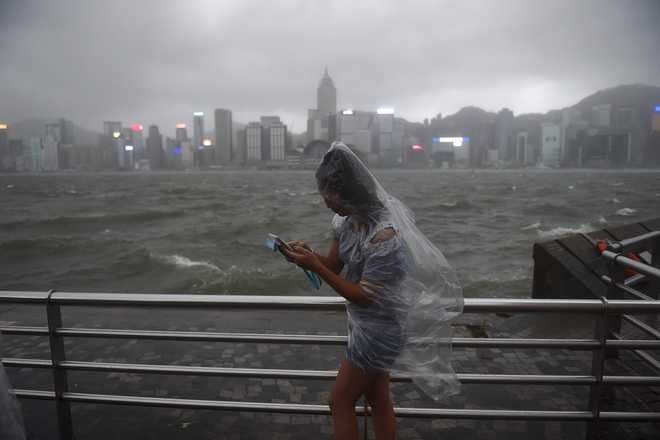Typhoon Hato makes landfall in south China
Beijing, August 23
Hato, the 13th typhoon to hit China this year, made landfall on Wednesday in the city of Zhuhai in the southern Guangdong Province, bringing gales of up to 45 metres per second.
Hato will move west and scale down to a tropical storm passing through Guangxi Zhuang Autonomous Region tonight, the National Meteorological Center said.
No casualties were reported in Guangdong Province, state-run Xinhua news agency reported.
So far, 13 cities and counties in Guangdong have issued red alerts for the typhoon.
Gales and downpours have suspended work, classes, and production in the cities of Zhuhai, Jiangmen and Zhongshan. Several expressways have also been closed.
Initial investigation showed that the typhoon blew down over 2,000 trees, damaged signs, railings and fences on roads in the province.
Power supplies were disrupted in some areas but had been partially restored.
As the typhoon moved westward, neighbouring provinces were also affected.
Flights were disrupted in Guangxi and rail services delayed or cancelled in Yunnan Province.
The typhoon will also bring heavy rains to central China’s Hunan Province, the provincial flood control headquarters warned.
Yesterday, thousands of people were evacuated in parts of south China in preparation for the arrival of Hato, the report said.
China has a four-tier colour-coded weather warning system, with red the most severe, followed by orange, yellow and blue. — PTI










